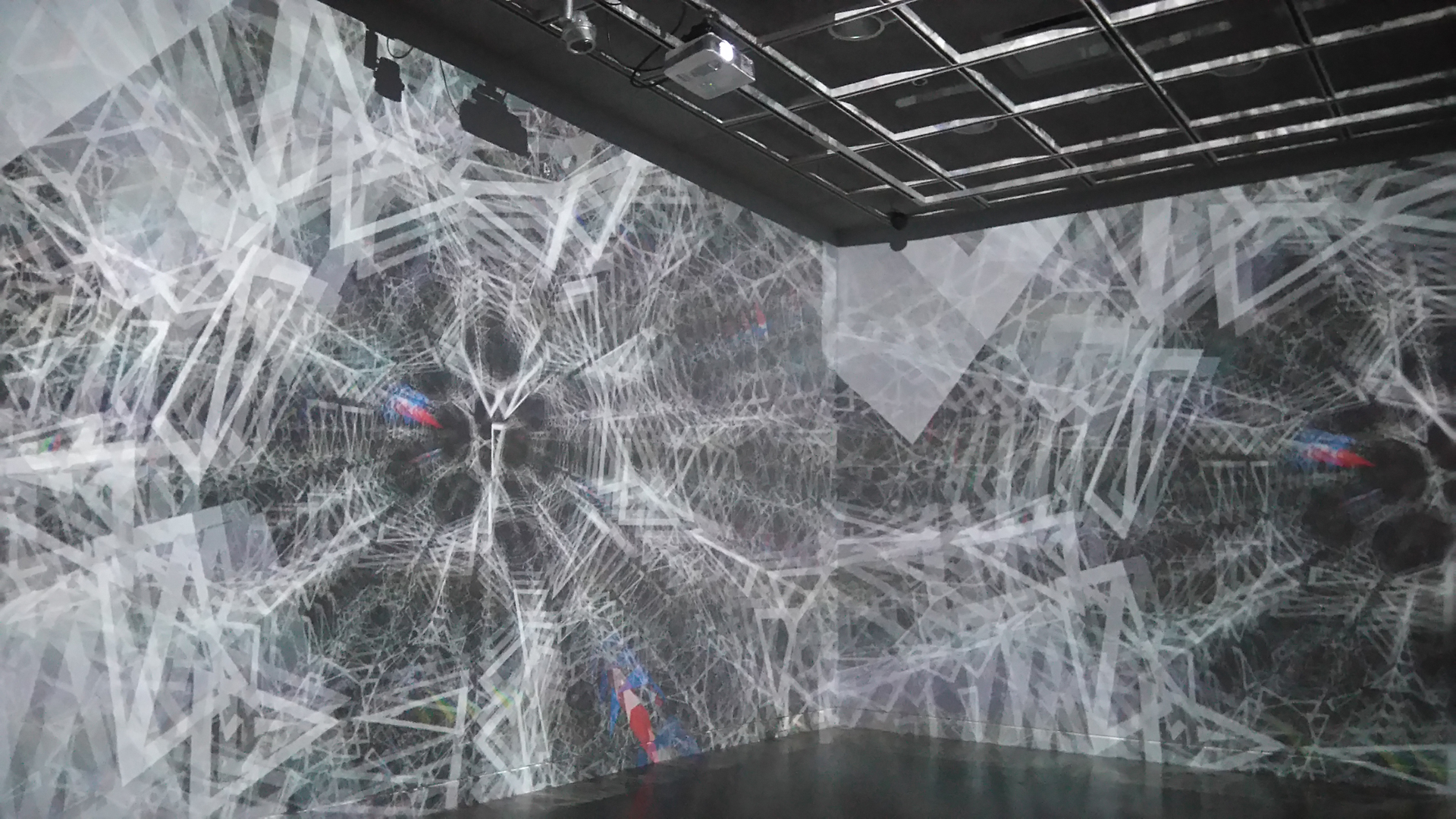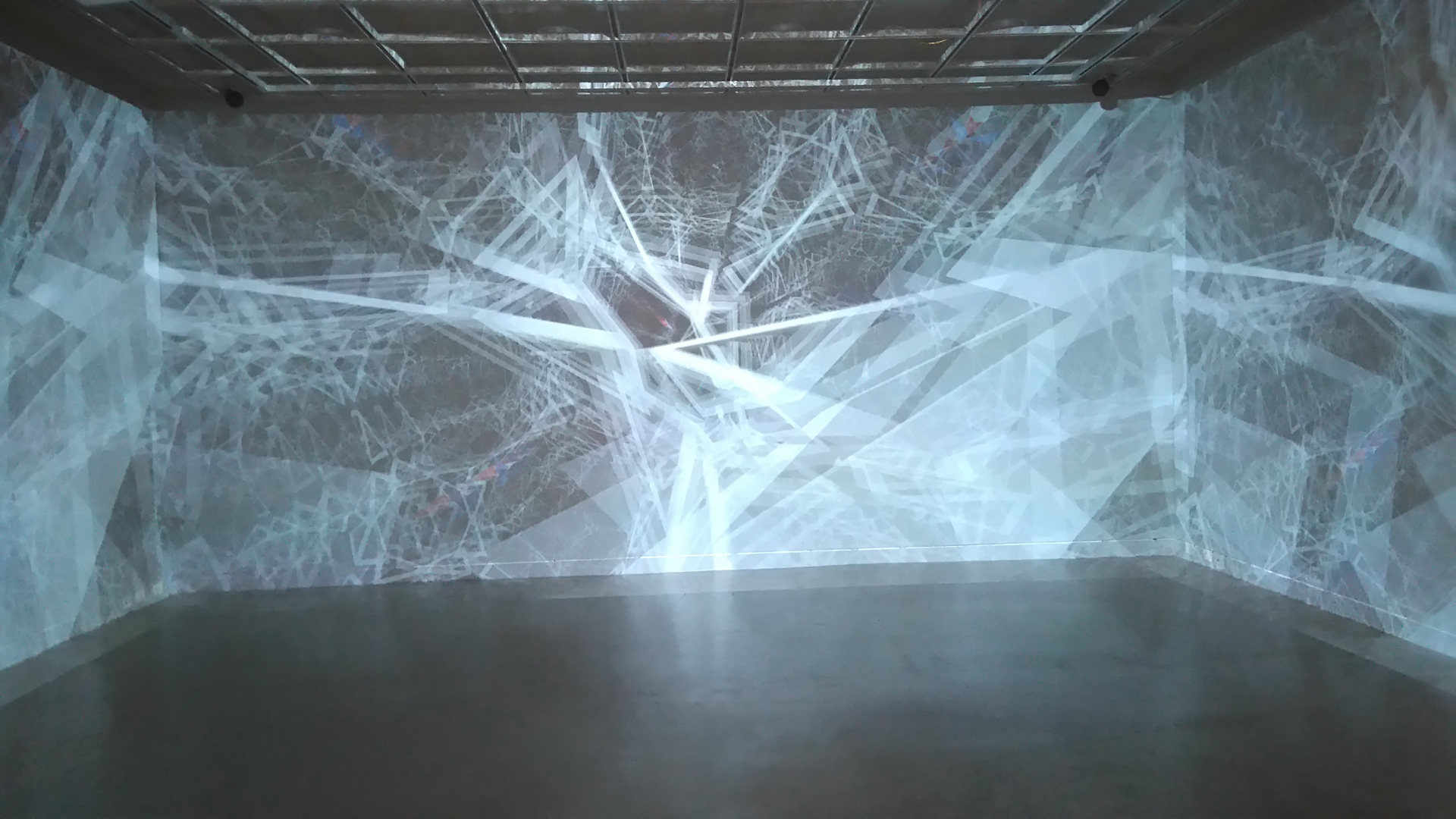Robert Lisek: Suprasymmetry
Artist(s):
Title:
- Suprasymmetry
Exhibition:
Category:
Artist Statement:
Summary
I have developed machine learning methods that extend granular and pulsar synthesis in composing and new methods of building and transforming virtual environments.
Abstract
The topic of my research was problem of creating virtual environments (VE) in immersive art. I was focused on a roles of Presence, Flow, Immersion, and Interactivity. I was particularly interested in the problem of presence and flow in VE. Presence is defined as the subjective experience of being in one place or environment, even when one is physically situated in another. Presence is a normal awareness phenomenon that requires directed attention and is based in the interaction between sensory stimulation, environmental factors that encourage involvement and enable immersion. Flow is a state of experience where someone is completely absorbed and immersed in an activity. I researched relations between presence, flow, immersion and interactivity, e.g. how interactivity and sound spatialization improves experience of presence. I have developed machine learning methods that extend granular and pulsar synthesis in composing and new methods of building and transforming virtual environments.
Technical Information:
AUDIO: left right – MacMini out left right – analog sound synthesizer left right – analog video synthesizer audio monitors + subwoofers + mixer solid table
VIDEO: 4 x video projector HDMI out
Process Information:
I am using AI and machine learning methods. My approach is based on meta-learning. Meta-learning goes by many different names: learning to learn, multi-task learning, transfer learning, etc. People easily transfer knowledge acquired in solving one task to another more general task. This means that we naturally recognize and apply previously acquired knowledge to new tasks. The more the new task is related to our previous experience, the easier we can master it. In contrast, popular machine learning algorithms deal with individual tasks and problems. Transfer learning attempts to change this by developing methods to transfer knowledge acquired in one or more source tasks and using them to improve learning in a related target task. Techniques enabling knowledge transfer will constitute significant progress in AI and interactive Aerts and storytelling.
I have developed machine learning methods that extend granular and pulsar synthesis in composing and new methods of building and transforming virtual environments. In this approach composing and formations of complex sonic or visual structures is based on
transformation of distribution and ordering of very large sets of small particles. The long term goal was creating of ‘vibrational topology’ in which creation of forms includes composing of oscillations, vibrations, pulses and flow of sound and visual events.
Other Information:
Inspiration Behind the Project
Suprasymmetry is the project that deals with AI and dynamic immersive environments. I use neural networks to explore non-euclidian geometries and sound spatialization. I have developed machine learning methods that extend granular and pulsar synthesis in composing and new methods of building and transforming virtual environments. I was particularly interested in the problem of presence and flow in virtual environments. Presence is defined as the subjective experience of being in one place or environment, even when one is physically situated in another. Presence is a normal awareness phenomenon that requires directed attention and is based in the interaction between sensory stimulation, environmental factors that encourage involvement and enable immersion. Flow is a state of experience where someone is completely absorbed and immersed in an activity. I researched relations between presence, flow, immersion and interactivity, e.g. how interactivity and sound spatialization improves experience of presence.
Key Takeaways for the Audience
Suprasymmetry is the project that deals with AI and dynamic immersive environments. I use neural networks to explore immersive non-euclidian geometries and sound spatialization.






